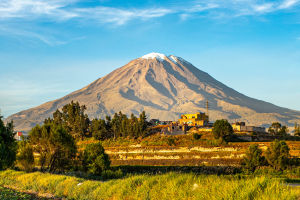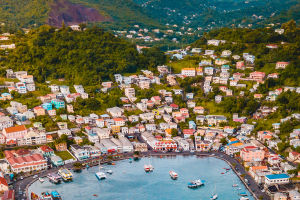Friends, ever pictured a lakeside paradise nestled high in the Andes that rivals famous seaside escapes in sheer beauty and cultural richness?
Copacabana, Bolivia, sits at 3,810 meters above sea level on the shores of Lake Titicaca, where cool mountain breezes mingle with crystal-clear waters under brilliant sunshine nearly year-round.
Travelers encounter a vivid tapestry of Quechua heritage, high-altitude adventures, and panoramic vistas from dawn until dusk amid an atmosphere that balances thrilling excursions and tranquil moments. This guide delivers concrete tips, exact costs, and vivid insights to transform any journey into an unforgettable Andean lakeside experience.
Ancient Roots
Ancient traditions echo through Copacabana’s cobblestone streets, believed by many researchers to mark the birthplace of the Inca civilization and its architectural ingenuity.
Historic altars and sacred sites on nearby Isla del Sol can be reached via a 1.5‑hour public boat ride priced at approximately $7.50 one‑way, operating from 8 a.m. to 6 p.m. daily.
An entrance fee of $15 grants access to archaeological terraces and stone stairways, where modern visitors can walk among ruins that once inspired legendary tales.
Local guides charge around $20 for a two‑hour walking tour, enriching each step with expert explanations of ancestral rituals, construction techniques, and the region’s enduring cultural significance.
Scenic Beauty
Lake Titicaca, the world’s highest navigable lake at over 3,812 meters, offers shifting hues of deep blue and turquoise that captivate photographers and nature enthusiasts alike.
A full‑day private boat tour, priced at $20 per person, departs at 9 a.m. and includes stops at scenic viewpoints, island beaches, and traditional reed‑island communities showcasing artisan craftsmanship.
Serene solitude awaits along pebbled shores near the town center at no cost, where sunrise reflections begin around 6:30 a.m., painting the water in pastel ribbons.
Rooftop terraces on lakeside hotels offer panoramic vistas at no additional charge, making dawn coffee or afternoon tea moments truly breathtaking.
Adventure Awaits
Adventure seekers can tackle the 1.2‑kilometer Cerro Calvario trail beginning before dawn to witness sunrise panoramas across the lake, a free activity taking roughly 45 minutes round‑trip.
Kayak rentals start at $15 per hour from local outfitters near the main pier and include brief safety instruction, allowing for smooth paddling across calm morning waters.
Island‑hopping beyond Copacabana involves a $10 round‑trip ferry to Isla de la Luna, departing at 10 a.m. and returning at 3 p.m., where terraced ruins and hidden pathways await exploration.
Seasonal factors matter: the dry period from May through October ensures stable trails and clear skies, while rainy months can add dramatic cloudscapes but require sturdy waterproof gear.
Local Flavors
Bolivian cuisine shines in neighborhood fondas where quinoa soup starts at $3, lake trout fillets with locally grown herbs at $7, and fresh fruit juices for $2. Artisan markets along Avenida 6 de Agosto feature handcrafted textiles, pottery, and miniature straw vessels priced from $5 to $20, perfect for authentic souvenirs.
Budget travelers find dorm beds in friendly hostels for as low as $15 per night, while mid‑range hotels offer private doubles between $45 and $60, often including lakeside balconies.
Boutique lodges with traditional décor and panoramic windows start around $80 nightly, frequently including breakfast and concise cultural briefings by resident experts.
Travel Tips
Getting to Copacabana requires a scenic bus trip from La Paz or Puno, with ticket prices around $4.50, departure times between 6 a.m. and 6 p.m., and a travel time of 3.5 hours.
Advance booking through reputable companies like GreenBus or Trans Copacabana is recommended two days before high season—June to August and December to February—to secure preferred seating and departure slots.
Currency exchange stalls around the main plaza offer competitive rates for USD, while ATMs dispense local currency at 3 % fees; carrying small bills ensures smooth transactions at fondas and markets.
Altitude adjustment tips include resting the first day, sipping local herbal tea available at $1 per cup, and limiting strenuous activity until the body acclimatizes to over 12,500‑foot elevation.
Hidden Spots
Cerro Calvario’s sunrise walkthrough begins around 5:30 a.m., rewarding early risers with golden light that silhouettes the lake and town from unobstructed viewpoints just above the main trail.
A short 20‑minute water taxi ride costing $5 one‑way leads to Playa Blanca, a secluded pebble cove where picnic spots beneath rugged cliffs invite midday relaxation.
Nearby Mirador Kuntur Wasi, accessible via a $6 guided jeep tour, offers sweeping panoramic landscapes of Andean valleys, lake inlets, and winding mountain paths.
Early‑light walks on terraced slopes reveal dew‑kissed wildflowers carpeting stone steps—no permit required, only a spirit of curiosity and a sturdy pair of hiking shoes.
Final Thoughts
Copacabana’s magnetic blend of ancient heritage, crystalline waters, and hands‑on adventures invites travelers seeking off‑the‑beaten‑path experiences that remain both budget‑friendly and deeply authentic. Concrete cost breakdowns, precise timetables, and seasonal advice ensure each itinerary aligns with personal preferences, whether chasing sunrise vistas or savoring local flavors by twilight.
This high‑altitude haven proves that genuine cultural immersion and natural splendor need not demand extravagant spending or elaborate planning. Which hidden trail, historic ruin, or lakeside vista will ignite the next unforgettable Andean escape?


